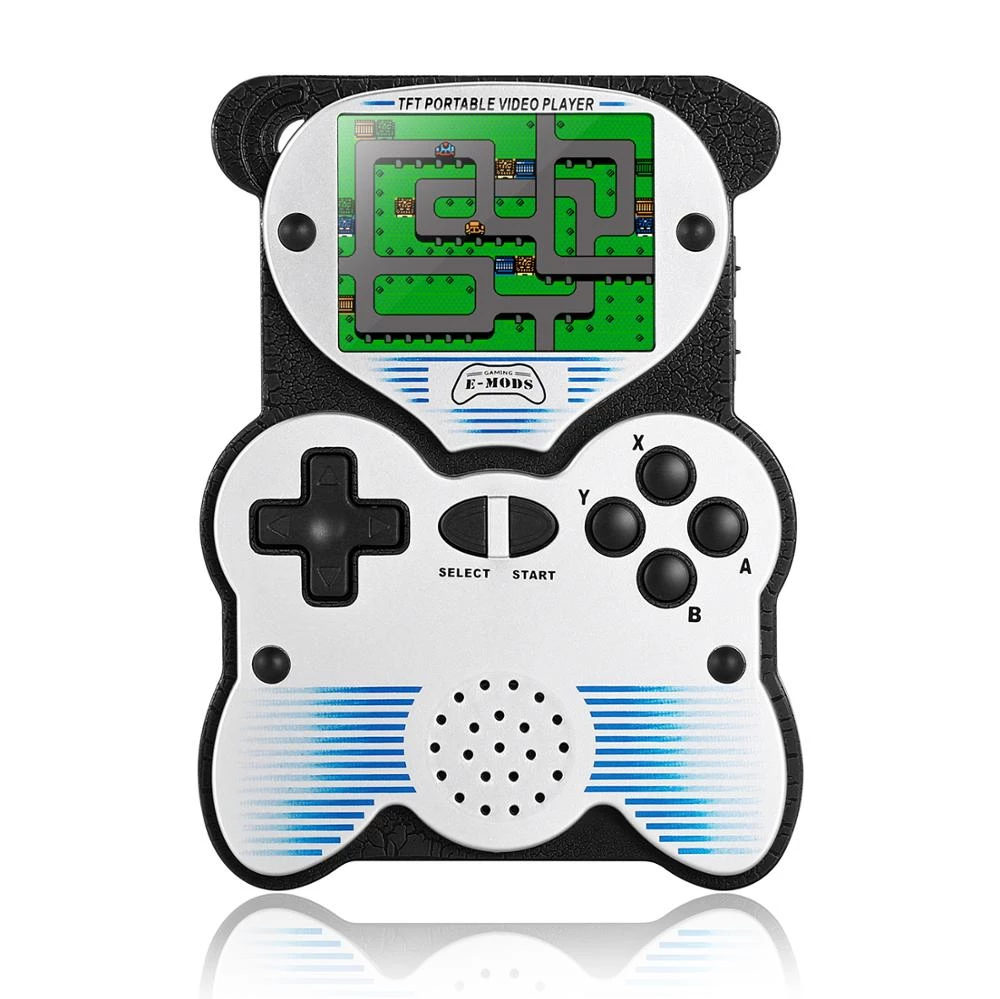| PD-250 Panda Handheld Price: $22.99 Find it on: Amazon, AliExpress  |
Rating: 3/10
Pros: Cons: |
Why do people enjoy playing retro games from the 8-bit era so much? The graphics are, well, 8-bit. The gameplay isn’t 3D. The music is basic. I can’t speak for everyone, but the reason I like these games is because it brings me back to my childhood. But playing these games as an adult, I know why I loved these games so much. Even though the developers didn’t have much to work with in terms of raw computing power, they made up for it in other ways. Even a basic game like Super Mario Bros. had warp zones, challenging bosses and power-ups. That’s why these games hold up 40 years later.
This takes me to my main complaint with the PD-250 Panda Handheld. Like many cheap handhelds from the Chinese market, this packs a wide variety of games into a portable form factor from the 8-bit era. But unlike other retro handhelds of the same class that I’ve reviewed in the past, there is a noticeable, and I would argue fatal, difference: It lacks actual retro games.
While there are a true 220 games on this handheld, and none of them duplicates, none of them are games you’ve ever heard of. In fact, they’re all home brewed games. Some are 8-bit takes on cultural events that have happened since the 80s. For instance, there’s an 8-bit homebrew of Texas Hold’em. Others are knockoffs of games that we would find familiar, but not too familiar as to raise any eyebrows on the legal copyright side. I found one game that resembled a Ninja Turtle, though the game itself was only called ‘Turtle.’
Of course, all of the 220 games looked like something you’d play on the NES. But none of these were actually games that you would’ve played. The homebrews lack the story, innovation or fun from the original NES. Take for example a game called F22. This shmup somewhat reminded me of a Life Force-1944 mashup. But after I cleared one level, level 2 was nearly a carbon copy of what I just cleared. ‘F22’ is a microcosm of the rest of the 220 games. Turtle was another example of just repeating the same level over and over again. That’s the problem. They’re games you play for about 30 seconds before moving on to the next.
So that’s the software side. On the hardware side, the 2.5″ screen TFT screen is what you’d expect from a handheld in this class. It’s dull and has poor viewing angles. But one (negative) thing that stuck out was that the screen is small compared to the overall size of the handheld. Most handhelds try to defer to the screen. This handheld seemed to go out of its way to dwarf it.
The overall form factor is shaped somewhat like a panda, living up to its moniker. It’s actually fairly comfortable to hold as a result of the pear shape, and has ridges on the back that make for decent ergonomics. Another thing I liked about the form factor is that the speaker grill was in the front, and is placed away from the buttons so the audio is not accidentally covered up. Of course, with any handheld in the $20 range, the plastic casing is cheap and the buttons are clicky with no travel to them, though I did find they were fairly responsive. The PD-250 does have an A/V out, though don’t expect a quality picture from it.
This handheld is on AliExpress and Amazon in the low-$20s range. That’s a bit overpriced in my opinion. If I’m going to be spending $20 on a retro handheld, I would need at least a few games I recognize. In similar handhelds in the same price range, 95% of the games were homebrews similar to the ones I just described on the PD-250, but that also means the remaining 5% of games were actually ones I played growing up. If the PD-250 had a similar makeup, I’d actually say the form factor could be worth the pickup if you didn’t own one of these devices already (I only have this because I was given a review unit). However, without the ability to play some version of Super Mario Bros., Donkey Kong, Pac-Man, Tetris, etc, I can’t recommend purchasing it.